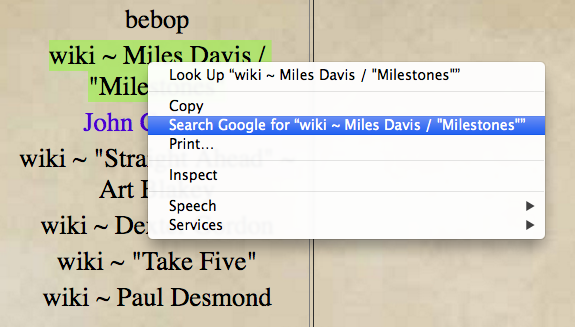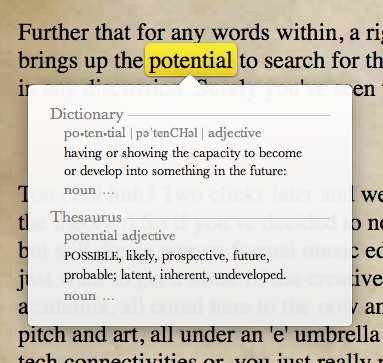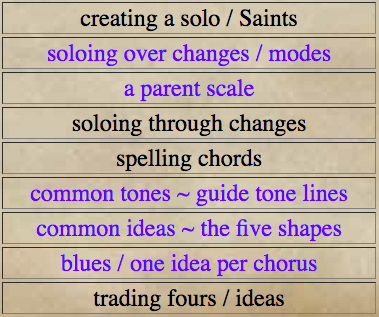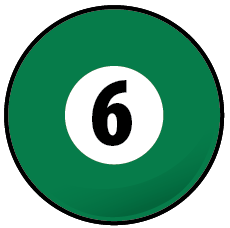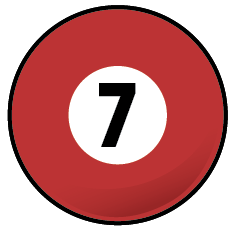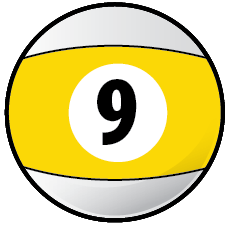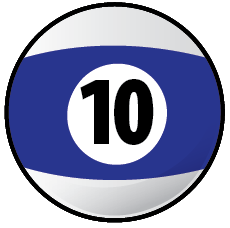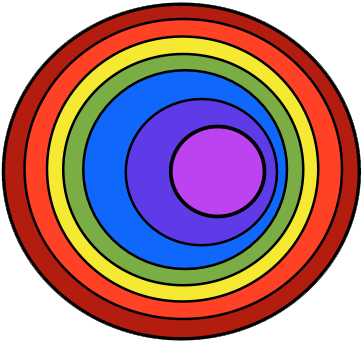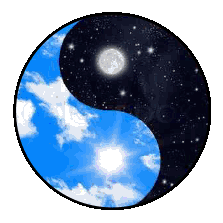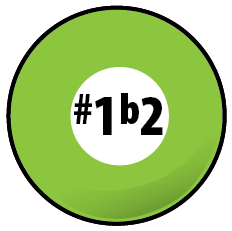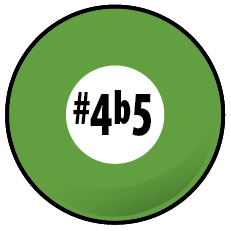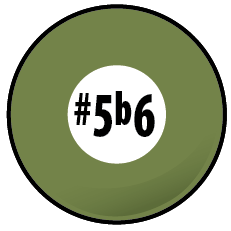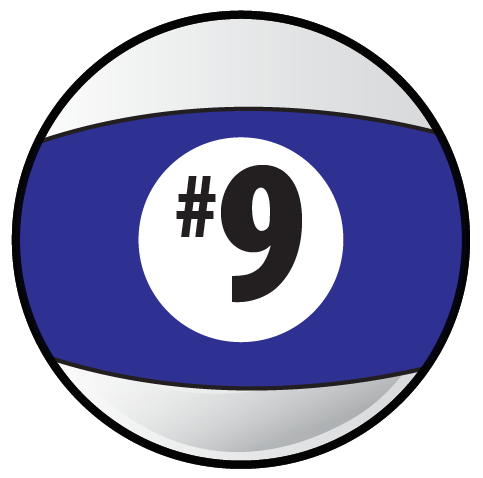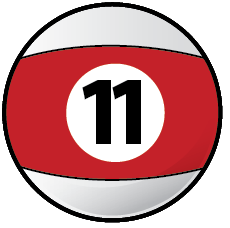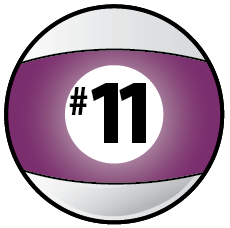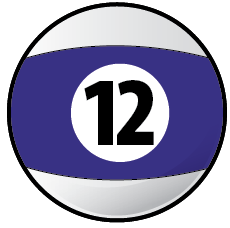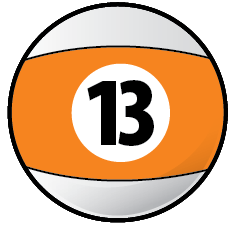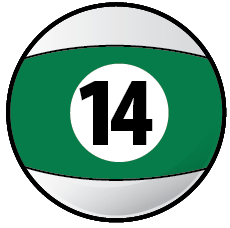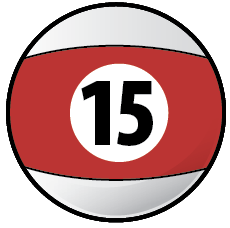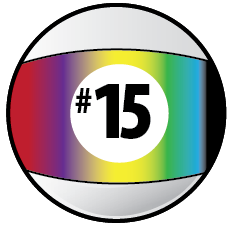|
~ Understanding Your Music ~ E M G ~ ~ an e-book for music's weave through the arts by JacMuse ~ ~ 'in each of our own communities are the mentors' ~ ~ 'click n' read curiosity powers learning to create our songs today' ~ ~ begin by asking ... 'what do I want to know about music." ~ |
Welcome and thank you. For choosing this magical cybertext extravaganza of an e-book for learning about our Americana musics. For modern e-books get a special magic or two in their writing, that further dimensionalizes the written word on a written page. Speaking of dimensions, remember to enlarge this page for your own ease of reading the worded text and written musical notation, especially the tab numbers staff included for guitar and bass. Mentorship in the arts. This work is dedicated to Dr. James B. Miller, University maestro and mentor many musical artists and the author over a decades long teaching career at the State University of New York at Plattsburg which concluded in June, 1984. Forty years later this e-book now takes form, its mentorship styled prose and questioning by 'call to response' dialogue emulate some of Dr. Miller's own methods, in theory, art and practice. Mentorship guided. This e-book and curriculum are designed to be self guided with an e-mentor to guide and answer questions. That by individualizing instruction a foundation stone is set initially based on what each learner brings to the learning process. And once underway, good things will happen. Collaborative by nature, as we involve ourselves with music over the years, mentor (s) will come along to assist in our own learning. And in believing that teaching others strengthens our own knowledge and understanding of art, as Dr. Miller did, we then can become the mentors of the next generations of artists who follow in the pursuit of their Muse. Share your learning with friends. This e-book encourages group and cooperative learning with ur musical friends. With on line global capabilities and the sharing of embedded links to knowledge and ideas within this text, create for yourself an e-book community of learners with this e-book.
|
Working with this e-book on-line. Designed to take advantage of the wonders of all things modern, electric and global, sharing this e-book all across the world with musical friends can be a couple of clicks away from a modern empowered computer learning system. A complete copy is posted on the www. And working off-line ... ? While we can bounce a signal off satellites in space, and still run a wire from here to there to connect, know also that this e-book fully functions as a stand alone, off-line intranet curriculum. While it does need a computer's capabilities, a web browser and speakers to fully operate, this music theory e-book does not need to be on-line, hooked up to the internet in any way to fully function. Need your own copy to work off-line ? No active links. So all of the written text and hyperlinking within, all the pictures, including written music notation .png's and all the playback music, everything necessary for this e-book to function is completely and freely included. Book stats include;
|
Know that there are just five active links going out of this entire UYM / EMG e-book music theory text. Being based in Alaska, these links go to University of Alaska Music Department web sites. As a brand new publication, there's an e-mail to the author Jacmuse to facilitate its implementation. That's it. No other hard wired written in outbound links ensures that the choice to go beyond this e-books discussions are of our own free will of curiosity's choosing. |
Finding a mentor. Any musician you know can mentor this book. If they're knowledgeable about music and curious, chances are that together you'll be able to figure things out, ask questions and find answers. Maybe then this mentor knows another musician who can help. And ever forward the learning and sharing of ideas will flow. Share learning with friends. And to begin to find a mentor, ask the musical / arts people you know at home and school. Check with your nearest public library folks for help, just ask a librarian for ideas on how to begin finding a mentor. Chances are good that a public library while have internet access, and as this e-book is on line, work with friends and join in with Alaska's statewide musical arts community. We love local ! If possible, go hear some music being performed, or to a music store, introduce yourself and ask if they know any music teachers. Follow up on their suggestions and when you make contact, say that you're looking through a music theory e-book on line and might they be of help or know of a music teacher on-line. Provide the link to this e-book on the www and begin. Or ... Just begin with a click or two and figure things out from there. That we each can be responsible for our own education makes all the difference yes ? All journeys need that first step, or in this case, a first click :) |
Learning 'by ear' and 'by book.' Learning 'by ear' ties us to a vast community of like minded artists who also 'play by ear', who learn their songs and perform without written music. With e-book audio of written music examples, adding formal book studies, with the various forms of written music, can usually create a curiosity about the 'finer points' discovered along the way in learning to play songs and how they are puzzled together. For as we 'hear and see' the notes together, formal training in music is taking place. For combined with understanding notation, the concept of 'book learning' is in many ways simply a vocabulary of AmerAfroEuroLatin words, built up now over the last 1000 years or so, that identify musical components of songs and their resulting sounds. words = power We know that the musical world has its vocabulary, and thus empowered, our conversations with knowledgeable artists and teachers and reading their books just becomes more possible and have new knowledge that we may seek. Knowing each musical style might have its own words for similar components, we often cross pollinate words between styles, creating the nuances woven into and through the Americana spectrum of styles. Ideally, new knowledge opens new doors yes ... ? Which energizes new curiosity, thus prompting new questions to be explored ... and round and round it all goes ... like the feedback loops of old from the big roar :) |
This e-book has notated audio playback. Combined with mp3. playback of the written notation, 'by ear' and curiosity jump us right to '3d' dimensions. So now those 'hey ... what was that chord' also becomes 'E7#9.' And knowing that ... ? Well 'E7#9' is also a V7#9, and/or a dominant chord with a color tone, and/or a 'tritone sub', and these new 'theory options' are notated and have mp3 playback. So, theory options become vocabulary words, linked all throughout in perfect closure, well mostly :) So we 'mostly by ear' players, who are curious about music and love to just play it, have a 'book learnin' way into the full on whole tamale, style spectrum of Americana song. |
The best of both worlds. Learning about music through listening and rote learning our parts is the way we generally roll in Americana musics. Watch any performance of folk, blues, rock and pop, even jazz, chances are the performers are not reading the music when performing. So what many of us often do, is use the music reading to help us with learning our parts, which we also learn by ear. Then, we memorize and perform the music by rote. With loving mentorship, it's the age old way of learning the magic. In this new fangled e-primer, we've the best of both; most aural 'by ear' ideas are written out in standard notation and linked to its mp3. playback file, and there's a little over 1800 examples. While music theory discussions of intervals, rhythms, scales, chords and styles generate most of the examples, 35 or so of the full melodies included come from an old public school music book of Americana classic songs and are among the same songs many of our Americana musical heros also learned starting out. So we can sure up our by ear / rote learning with reading, and copying the notation for sharpening writing music skills too. Throw in a few 'what's that or what if' questions along the way and our lifetime journey into the musical arts begins through this e-book portal to the www of global musics !!! |
What we already understand. The basis of this method is to first recognize what we already know about our music. These become our start points. We then tie this knowledge on into topics of which they are a part of. Then with hyperlinked vocabulary words, this e-book weaves together the topical theory, history and art associated with music's most common elements. So just ask yourself, what do I already know about music I love the most? What don't I know about this music? Also ... what do I want to know? What am I curious about in this magical time travel of all the arts ? For these self queries conjure vocabulary words to open up this book for you. Once engaged, your own 'need to know' curiosities will always be your true energizer for your learning. Curiosity is built right into who we are and if we dig it too, there's a lifetime of learning ahead. The process here is to click, read, discover, then click read discover, click read discover ... :) And if it happens that your computer is on line, mastering a one 'trick click' with your browser rig and this e-book does the Wiki-kaboom :) Questions that arise ? Ask your mentor. |
Check 1 2 ... check 1 2 ! First modern magic. A most magical of all of today's music theory 'e' book magical features is that we can now make the notes of our written music ideas sound out their pitches and rhythms as written with a click of a button. By using computer notation software, its mp3 file and a web browser, our modern wizardry helps to 'hear the theory.' Click on the music and try it out. Example 1. ... check 12 ... check 12 ... :) |
 |
Got audio ... ? Amazing huh? Nice and bright, grand piano patch ? Yep. Blinks a bit too? It's supposed to. To hear it again, and again and again ? Just click it, and click and click :) The ancient rote learning by repetition. So yea, this playback 'e' feature just might be the ultimate bridge getting the notation and theory together in learning. Thus empowered, we can play by ear and then explore what's under our fingers as well as learn to sight read standard notation. Rote learning all along the pathways provided by a word. For instance, the triads that create this last idea is a super magical music word for certain, and in this e-book hyperlinked to a dozen or so related discussions all through the book. |
For this simple association of specific musical sounds and their special music words is an ancient way we've always learned, thus can form a true basis to begin understanding all musics and arts too. For we can trace how the very same compositional elements are shaped, and reshaped, to build up our various music styles as the decades have rolled on by. Audio playback helps :) |
Second modern magic ~ hyperlinked text. We can link from one topic and discussion to another with a hyperlink. Try the link to the right to read up on the philosophies that govern this book. Then click back to return here or click forward and continue on from there. |
With this magical linking feature, our own unique curiosities of music energize a way through this book, building upon what you already know and love about music, and even your general interest in the all arts. Scholars might term this foundation of 'what we already know' as our 'existing information.' |
With hyperlinks, we build in learning excitement. For in this work's design, there are links that go ever deeper into the complexity of each topic. As we choose our links, we discover our own pathway of learning, accelerated by our own curiosity and need to know. |
For example, we can link discussions from our historical source and organization of the pitches to create loops of these pitches, then link to group up these pitches, then link to major and minor groupings of these pitches, then to the 'modes' of these pitches, then link to arpeggiate these pitches and finally to stack these same pitches into triads, chords and arpeggios beyond. While all through and throughout these discussions there are links that tie back into the blue hue origins of the Americana mix, and forward to points beyond the 12 tone looping universe. 'So as you click along and bump into what you already know, just click ahead and keep on keepin' on :) |
A third magic ~ learning by ear. As crazy as it sounds, the third magic is more of a realization and was not planned, and discovered at the end of my writing this book. Turns out that nearly all of the musical phrases included are ear training and transcription exercises too. And they will work for any instrument, clef etc. For those that play be ear, you can push the button as many times as you want, to find the pitches. Start off by singing the pitches, then find them on any instrument you have on hand. Click any idea a hundred times if needed, to rote learn by ear the same basics that build up all of our styles of musics. Try it with a click. |
 |
Major triads? Yep. One / Four / Five? Yep. Hearing the theory in action is called ear training in formal music school / college. Finding it on our chosen instrument is the challenge. Lifting ideas off recordings and notating the lick is transcribing. And for those becoming more astute listeners, associating a vocabulary word with its sound is a brick to build with. Building knowledge and being serious is real fun for those so impassioned. |
"I did not do it on my own." |
wiki ~ Magda Saleh |
|
The letters 'wiki', even in an unenergized link as written into this e-book, are the search engine trick and go right to the page of the topic. Try it out. It's beyond cool and even on 'dial up', will eventually get us there :) Try this link to a wiki page all about web browsers. |
|
While all of the 'wiki' links in this work are check out that such a wiki page exists, this 'click / highlight / search / choose / arrive' magic can further be used to search any text within this text, to explore beyond into the web. Imagine that. So combining these together, to wiki and beyond by choice, we together create a guided pathway for you to explore and learn many aspects about the music you dig. Its histories, artists, theory and literature of any era.
|
For it's the best place to start really, with music that just touches our souls. Shared with musical friends, sky's the limit for a full lifetime of discovery learning and a life in the arts, for 'all music was once new.' Here's another way this 'beyond' manifests, defining any word. |
|
Five's a charm, a last bit of magic for now. All the hyper-links within this 'e' book are black until visited, then they'll turn to purple. It'll look like this.
Over time, and as you acquire knowledge from moving around in the text, by making our clicks through the discussions and vocabulary, you'll see more and more of the purple text, highlighting accumulated knowledge of the vocabulary terms of our musics. 'Seeing purple = curiosity, discovery and learning.' By turning words purple, you tie right into the collective musical components / vocabulary we all can share. Seal the deal in your own 'understand' by being able to aurally recognize these musical colors with its associated 'academic vocabulary.' Oh, and seeing too much purple in your copy ... ? Just clear the browser history and be right back in the black :) |
"The one true teacher lives at the center of your heart." |
wiki ~ Sanskrit proverb |
UYM / EMG e-book curriculums. These links each 'start' a musical discussion. Pick'a-way. Bookmark your discoveries and build new knowledge by reading through topics of interest and following the hyperlinks that surround and expand each discussion. For through this exploration our options expand. Don't worry about getting lost, (there's always the arrow back button), correspond with your friends and mentors for questions, clarifications and discussions of your musical art. |
"Not all those who wander are lost." |
|
Ancient ways into the modern way. In the now way olden days and still right up to today, learning music theory by ear has been a sure way to get it done. For when we hear a musical component and recognize what it is, we're good. They're always ways to expand 'in theory' from any one point or collection of points in music, but recognition of elements by ear is the goal. Commonly termed as to 'play by ear', click the link to begin. Jamming tracks too. Ear, heart, express. Crazy to try and explain but ... as we advance our art from the core diatonic realms and into the more complex mixings of the colors, our 'ears' have to accept a sound, chord, rhythm or phrase 'that works' within a musical context when making art. And each step of the way will often be a challenge to what our 'ears' tell us is cool. For example, accepting a V7b9 color as a workable chord for a vanilla V7 chord's traffic cop role in a song's chord progression may also, further on up the curiosity discovery road, bring us into the theory of what V7b9 can also bring in regards to the fully diminished 7th qualities within the V7b9 chord, such as motions in minor 3rd's and chord substitution principles. That the diminished color's theories are a structured way to understand the harmony evolutions that took place through the last century is initiated by first recognizing its sound 'by ear.' We can begin our 'by ear' learning with a song. For the songs included include an overview of the song's theory elements. Find a mentor. |
A couple of 'start' pages. Another easy way to begin with this 'e' book is through these seven designated start pages. Pick'a way in for yourself by your interests. |
Home school ~ public school. For all enrolled in school, like learning to read and write languages, improving a learners 'reading comprehension through musical studies', is also a goal of the style of wording woven throughout this work. By speaking the words aloud, they very often form a dialogue, engagement and questioning. Encourages the learner to be curious. By the same token, learning to read and write music is a skill to hone and develop for finding steady work in the musical arts. |
Your instrument. Longest journey needs a first step ... or click in this case :) Knowing that the same theory applies to all the instruments, makes it easy to jam with one another. Here's some of the basics for each instrument. |
The seven steps, a sequenced study of the basics. The links below form a curriculum of basics that apply to all of our musical styles. Aim for a week or two on each topic in turn, rote learn content and take the vocabulary quiz to seal the deal, a school semester's worth. Got a challenge of a hill to climb yet ? |
Public libraries. Work through at your own pace, and surely go to wherever your curiosities insist. Libraries love words and vocabulary and books. Ask the librarian about finding a mentor to help with questions. That most USA libraries have www. access, and thus this work and mentorships become globally available too. |
For music teachers. For music educators the listed links here can build the essential skill set of all up and coming Americana artists. Taken one at a time, they combine into making art. Each link here portals to an evolution of topic through further linking to related topics. Reduced down to a couple of weeks of study, the one page primer is near right out of "Let Music Ring" 1940's era school songbook, some of which are included to study. |
Classical conversions towards 'improv Americana.' For the classically trained musician looking to develop their understanding of improvisation, the curriculum of study suggested are these links in this order. For practice, easiest way to have fun just continue learning the melodies of our classic Americana song weave, play them with gusto :) ... and over and over by rote. Collaborate through your improvisations and see where it takes you. Find a mentor for studies here. |
Becoming a professional Americana musician. Reading here and thinking of going pro ? Create a career for yourself in the Americana musics? Cool. |
For guitar players. Starting with ideas for beginning players and the open chords, we add in some historical evolution of the blues by examining two common ways of tuning up of the pitches. From this basis we work our way towards jazz guitar, sensing that rhythms shape music style. |
For bass guitar players. The bass method is structured right down the middle of our relative major / minor theories. Joy an sorrow paired hand and hand through triads and the added 7th of the blues colors. Along the way the Americana we love in all styles is revealed. And that rhythms shape music style. |
For listeners. Consider running the links to the right in order and discover what's there of interest. Find a mentor to ask your questions that come along. Add a dance step or two. |
Chapter headings. Most books go by chapters, and this 'e' book can too. While we can 'click off' to wherever as we read and venture along, for some readers it can be helpful to have a numerical way to 'chapter' through a book. Here they are, numbered and sequenced by evolution of content and with the understanding that ... truly ... 'all roads, lead to Rome :)'
|
chapters |
Beginning artists / theory. Just use your own existing knowledge, what you already know of your musics, as a way to begin your studies here. Your curiosities, instincts and artistic needs to know will choose which links to follow, just click, read and discover. Click, read and discover ... and rote learn what you need to know, even write it down.
|
Advanced artists / theory. Advanced pretty much means that you've been doing this for a while now and are curious. So just follow your own curiosities, click and read on ! A lot of this learning becomes vocabulary, a few new words can open things up. And crazy but near everything musical has a loop, of whatever source, the closure confirms the theory. Pick a way.
|
|||||||||||||||||||||||||||||||||||||||||
Advanced capstone classes. Included in this book are three chapters called 'capstones.' As in architecture, cap-stones are the high points often in arches, built up by all our combined studies of music theory building blocks. From their heights we view new challenges to explore and conquer. |
"If I have seen further it is only by standing on the shoulders of giants." |
wiki ~ Sir Isaac Newton
|
Basic academics and activities. So what musical topics are you curious about or what new theory knowledge will help you find your art ? Here are some linked suggestions for discovery. |
The whole tamale. This approach, is all about creating a complete big picture our musics in one fell swoop. Once in place and framed by real history events and nuts and bolts theory, we've a lifetime's sized canvas to fill in our needs as they come along. And as we evolve in our own musics and music making, we cook up our own tamale.' |
"I did not do it on my own." |
wiki ~ Magda Saleh |
| A mentor's guide. Easy do here and just about anyone with an interest in art / music can mentor this e-book. The trick is to just try to stay even or maybe a little bit ahead of your students until that moment when they self motivate by natural curiosities and insights. |
Mentor by email. As all the topical discussions are linked all through this entire text to one another via hyperlinked music vocabulary terms, it's easy to send a link via email to spots in the text that each learner's own interests and existing musical knowledge identified through a few vocabulary words they already know. For once a familiar term or two is located within this e-book, we simply read to learn and click back and forth through the included hyperlinks of each paragraph to explore new and related ideas. Designed in concept and format for discovery learning to blossom from there, via one's natural curiosity and simply wanting to learn, we get by with a little help from mentor friends :) |
And ideally ... ? Get both you and your mentee on computers with internet. Open two separate windows in a web browser (size them so as to layout side by side on screen if possible). Open UYMEMG e-book on one side and a videotelephony window to learner on the other. Looks like this and your on the same page. |
|
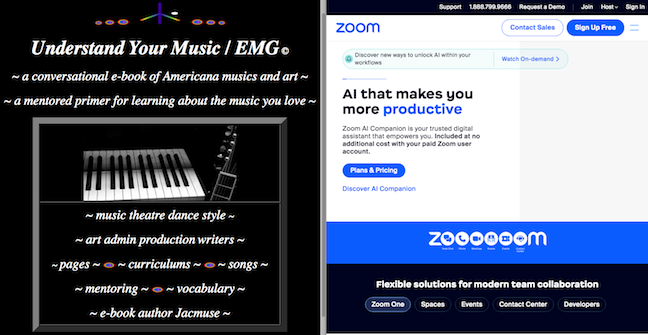 |
Ideally ... there's that word again, try to spend say 15 minutes or so with each new mentee, finding topics of interest, creating a bookmarked pathway. And if appropriate, you must set your own fees and its method for its payment to you, for your tutoring time and musical services. From today through April, 2029, this e-book is free for all to enjoy and share. |
A curriculum by the numbers. In addition to the dozen included curriculums, an easy way to mentor and create an individualized curriculum, once you've an idea what one learner needs to advance, is to create a series of numbers from the page index, that represent a curriculum pathway of hyperlinked discussions of their topical interests. |
This page sequence starts each learner off on a learning pathway to follow, and all along the way, low and behold, whenever their curiosity kicks in to pursue any of the 100's of hyperlinks found along side each pathway, we've energized that magical sense of personal discovery. Knowing that all of the pitches and their theories will eventually loop back to starting points, e-book magics encourage self directed, individualized instruction, paced to each learner's own dynamics of acquiring knowledge. Here's a few 'common interest' topics and learning tasks sequenced into a numerical curriculum of topics and discussions by page numbers. When we ask a student what they want to learn about and they reply with ideas such as ... :) |
'learn ways to 'jazz up' a song' |
|
|||||
'learn a new melody / song and to 'fear not the melody' ! |
||||||
'learn of scales / arpeggio / chords' |
||||||
'start music theory school' |
||||||
'learn about chords, color tones and chord progressions' |
||||||
'learn about the blues, 12 bar blues form and blues chord substitution / major ~ minor progressions' |
||||||
'learn about musical forms and composing songs and lyrics' |
||||||
'learn about playing by ear and improvisation' |
||||||
'learn about jazz guitar, chord melody and soloing through chord changes' |
"Your joy is my joy." |
wiki ~ Susie Tennant |
table of contents |
knock knock :) |
||||||||||||||
~ page #'s / alphabetical index of pages / discussions ~ 1 ~ Americana musics / in theory and practice ~ 2 ~ academic measures for vocabulary terms ~ 10 ~ Americana blues in open 'G' ~ 11 ~ Americana blues is standard tuning ~ 12 ~ blues chord substitutions (major) ~ 13 ~ blues chord substitutions (minor) ~ 14 ~ blues / make it a blues ~ 18 ~ chord melody for guitar ~ 20 ~ chord voicings / shapes ~ 22a ~ chop shop / barre chords ~ 22b ~ chop shop / bend notes ~ 28 ~ the diminished triad colors ~ 31 ~ etiquette ( for performance ) ~ 32 ~ EMG ( out of print ) in pdf ~ 32a ~ TRC ( out of print ) in pdf ~ 35 ~ just fifth's with no 3rd ~ 42 ~ groups of pitches (scales) ~ 43 ~ harmonica / blue cross harp ~ 46a ~ improvisation / advanced ~ 51 ~ Delta style blues artist Jake Matson ~ 52 ~ Chicago style blues artist Joey Fender ~ 56 ~ lyrics ( and writing lyrics ) ~ 57 ~ major / minor (relatives) pairing ~ 61 ~ modes (scales of olden times ) ~ 67 ~ open tunings for guitar ~ 68 ~ making music with pentatonics ~ 70 ~ prepare for performance ~ 71 ~ performance / improvisation ~ 74 ~ scales / groups of pitches ~ 76 ~ the shape of any guitar chord ~ 77 ~ sequencing of musical ideas ~ 80 ~ soloing through chord changes ~ 81 ~ soloing over chord changes ~ 83 ~ spelling / spelling chords ~ 84 ~ start formal music school ~ 85 ~ styles and genres of music ~ 86 ~ substitution principles of harmony ~ 88 ~ supplemental songs / learn by ear ~ 88a ~ supplemental songs / gems ~ 92a ~ building a tuned guitar ~ 94 ~ vamps and grooves for jamming ~ 95 ~ whole tone / augmented colors ~ 96 ~ the 'y's of our learning Americana... ~
|
~ Essentials Of Modern Guitar © ~
~ Tonal Resources For The Creative Musician © ~
~ Joey Fender's Blues Book © ~
References. References for this page come from the included bibliography from school and the bandstand, made way easier by the folks along the way. In addition, books of classical literature; from Homer, Stendahl and Laudurie to Rand, Walker and Morrison and of today, provided additional life puzzle pieces to the musical ones, to shape the 'art' page and discussions of this book. Special thanks to PSUC professor Dr. Y. Guibbory, who 40 years ago now provided the spark to ignite a love within me of the weaving of the history of the arts into the evolutions of Americana musical art. |
|
Find a mentor / e-book / academia Alaska. Always good to have a mentor when learning about things new to us. And with music and its magics, nice to have a friend or two ask questions and collaborate with. Seek and ye shall find. Local high schools, libraries, friends and family, musicians in your home town ... just ask around, someone will know someone who knows someone about music and can help you with your studies in the musical arts. |
|
"Who is responsible for your education ... ? |
you :) |
Intensive tutoring. Luckily for musical artists like us, the learning dip of the 'covid years' can vanish quickly with intensive tutoring. For all disciplines; including all the sciences and the 'hands on' trade schools, that with tutoring, learning blossoms to 'catch us up.' In music ? The 'theory' of making musical art is built with just the 12 unique pitches, so easy to master with mentorship. And in 'practice ?' Luckily old school, the foundation that 'all responsibility for self betterment is ours alone.' Which in music, and same for all the arts, means to do what we really love to do ... to make music :) |
 |
"These books, and your capacity to understand them, are just the same in all places. Always bear in mind that your own resolution to succeed, is more important than any other one thing." |
|
Academia references of Alaska. And when you need university level answers to your questions and musings, and especially if you are considering a career in music and looking to continue your formal studies, begin to e-reach out to the Alaska University Music Campus communities and begin a dialogue with some of Alaska's finest resident maestros ! |
|
